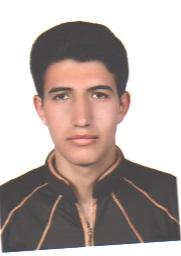The Investigation of the Microstructure Laser Welded 1050 Aluminum Sheets Grain Refined by Accumulative Roll Bonding (ARB) Process - دانشکده فنی و مهندسی
The Investigation of the Microstructure Laser Welded 1050 Aluminum Sheets Grain Refined by Accumulative Roll Bonding (ARB) Process

نوع: Type: thesis
مقطع: Segment: masters
عنوان: Title: The Investigation of the Microstructure Laser Welded 1050 Aluminum Sheets Grain Refined by Accumulative Roll Bonding (ARB) Process
ارائه دهنده: Provider: meysam farhangiyan
اساتید راهنما: Supervisors: dr mo hsen sheykhi and dr yosef mazaheri roodbali
اساتید مشاور: Advisory Professors:
اساتید ممتحن یا داور: Examining professors or referees: dr hashem mazaheri and dr rahman seyfi
زمان و تاریخ ارائه: Time and date of presentation: 2022
مکان ارائه: Place of presentation: آنلاین
چکیده: Abstract: One of the mechanisms to increase the strength of aluminum alloys is fine-graining, and the problem with these alloys is that in the alloys that are strengthened by this method, due to welding, due to the heat entering the welding area, they cause coarseness and loss of mechanical properties. The aim of this study was to investigate the microstructure of the base metal during laser welding in which the base metal has become fine-grained also the study of the effect of the initial microstructure of the base metal and its initial grain size on the grain size of the weld metal is another goal of this dissertation. In order to fine-tune the base metal, after each pass of the ARB process, the material was heated to be fine-grained by the recrystallization process of our structure. Granulation was performed by cumulative hot rolling (WARB) on 1050 aluminum sheets. Before performing the WARB process, 1050 aluminum sheets were annealed for 2 hours at 270 ° C. In the following, samples were cut in 20 by 5 cm and 1 mm thick by guillotine. Before the rolling process, Preparation operations such as washing the sheet surfaces with acetone and also roughing the surfaces were done with special brushes. Prior to the rolling process, the samples were preheated to 170 ° C and then immediately rolled into the machine. This operation was performed up to 7 WARB passes. In this study, the laser process was selected for welding because it has a very low inlet temperature and this method is used to investigate the extent to which the loss of properties and grain growth in HAZ of fine-grained aluminum alloys occurs. Then laser welding was performed using Nd: YAG pulsed laser machine as spontaneous welding on different passes of the rolling process. The microstructure was examined by light microscopy and scanning electron microscopy. Hardness was then evaluated at different points by micro hardness test. In general, the hardness increased with the increase in the number of rolling passes, but in the seventh pass, there was a slight decrease in hardness. Crystal size, lattice strain, and misalignment density were measured by X-ray diffraction (XRD) test. The results showed that the size of the crystals decreased to pass 5 and increased from 550 nm to 448 nm and increased to seven to 460 nm. The results of EBSD images showed that with increasing the number of rolling passes, the grain size decreased and they were seen stretched in the rolling direction. It was also observed that the initial grain size of the base metal is independent of the grain size in the weld metal region. Phase field simulation software was used to simulate the base metal and weld metal regions and it was observed that the results of this simulation are in good agreement with the laboratory results. Also, an analytical modeling method was used to predict grain growth in the heat affected area, which predicts grain growth well. The results showed that there was a critical grain size for grain growth in HAZ which was reported to be 12 μm. The effect of the basic structure microstructure on the microstructure of the weld metal region in different passes of the aggregate cumulative rolling process was investigated and the results showed that the grain size in the weld metal region is independent of the initial grain size of the base metal. The effect of increasing the power density in terms of distance from the molten pool was investigated and the results showed that with increasing the laser power density, the grain size in the HAZ area increases. The effect of increasing power density on the grain size of the weld metal was investigated and with its increase, the grain size in this area increased. Also, the effect of the initial grain size of the base metal on the area of HAZ was investigated and the results showed that by decreasing the initial grain size of the base metal, the area of HAZ increases. Changes in the temperature history of 5 different points in HAZ were investigated and it was observed that with increasing temperature, the growth rate increases. It was also observed that with decreasing the initial grain size of the base metal, the growth rate increased. Changes in grain size outside the melting line at position 1 over time were investigated and it was observed that due to the high cooling rate, grain growth stops rapidly after the laser is turned off.
